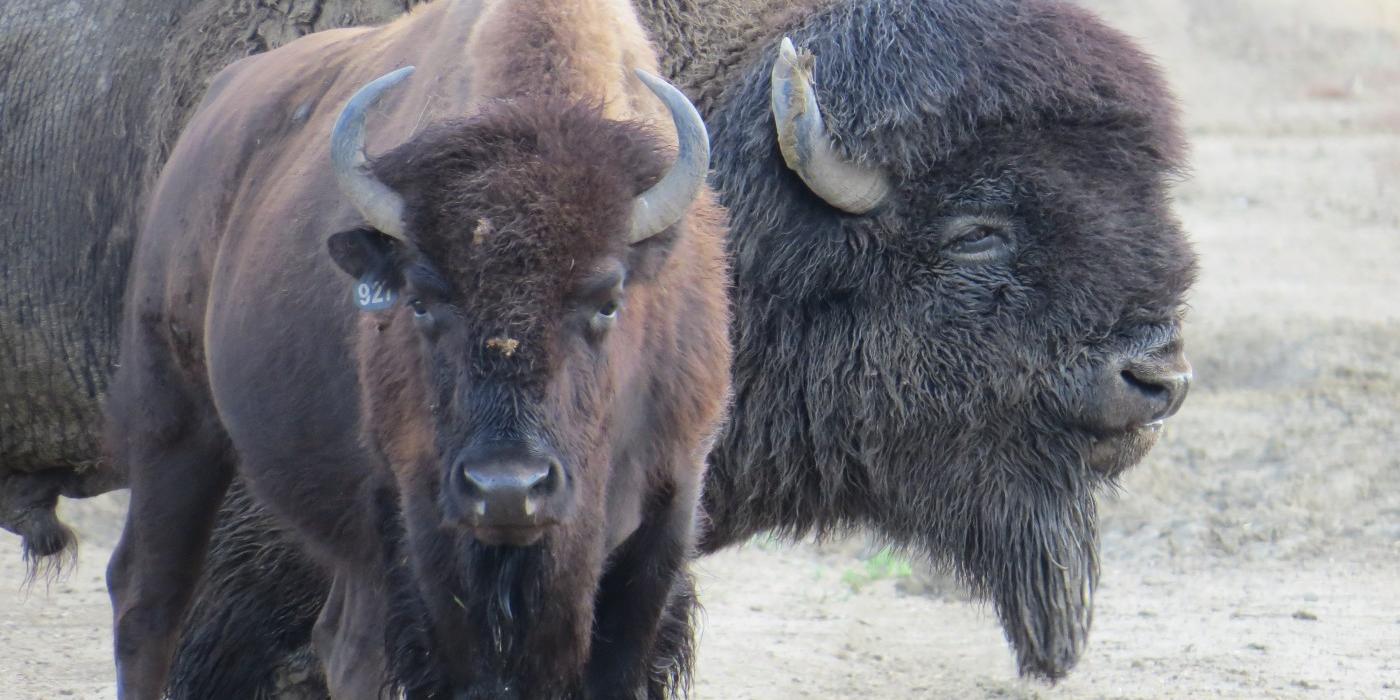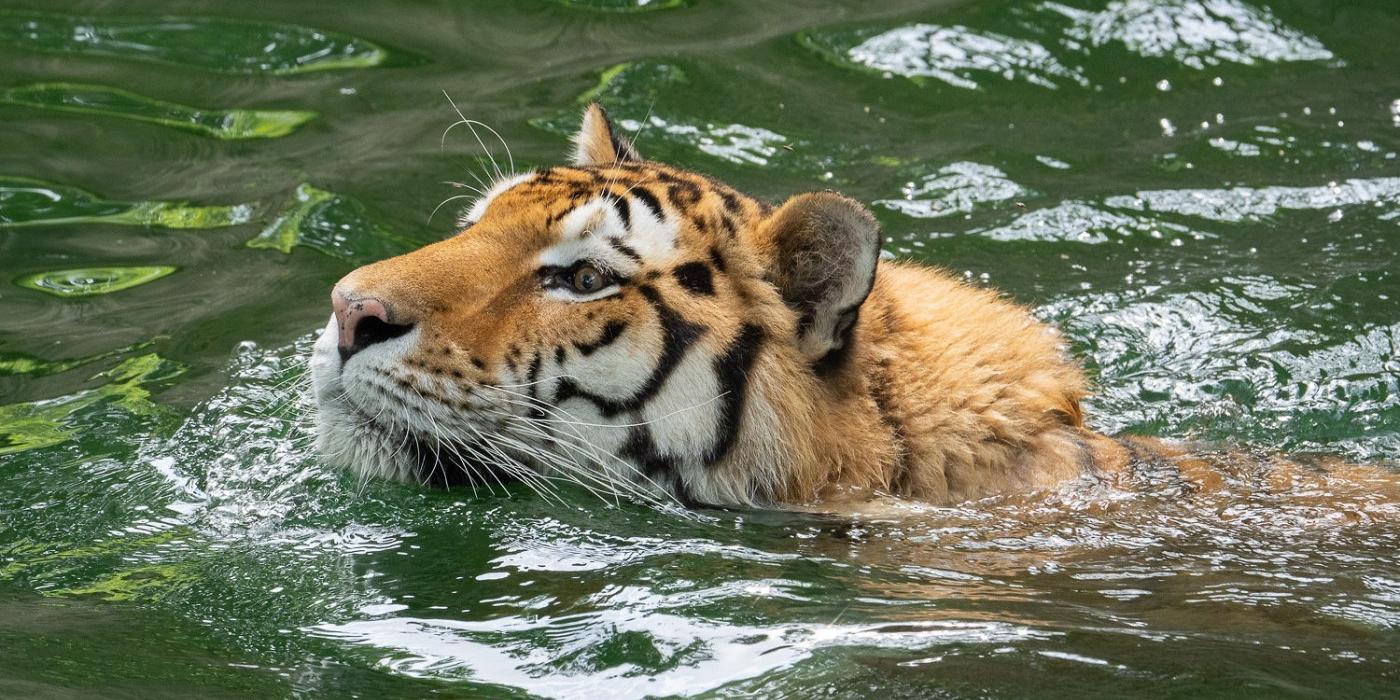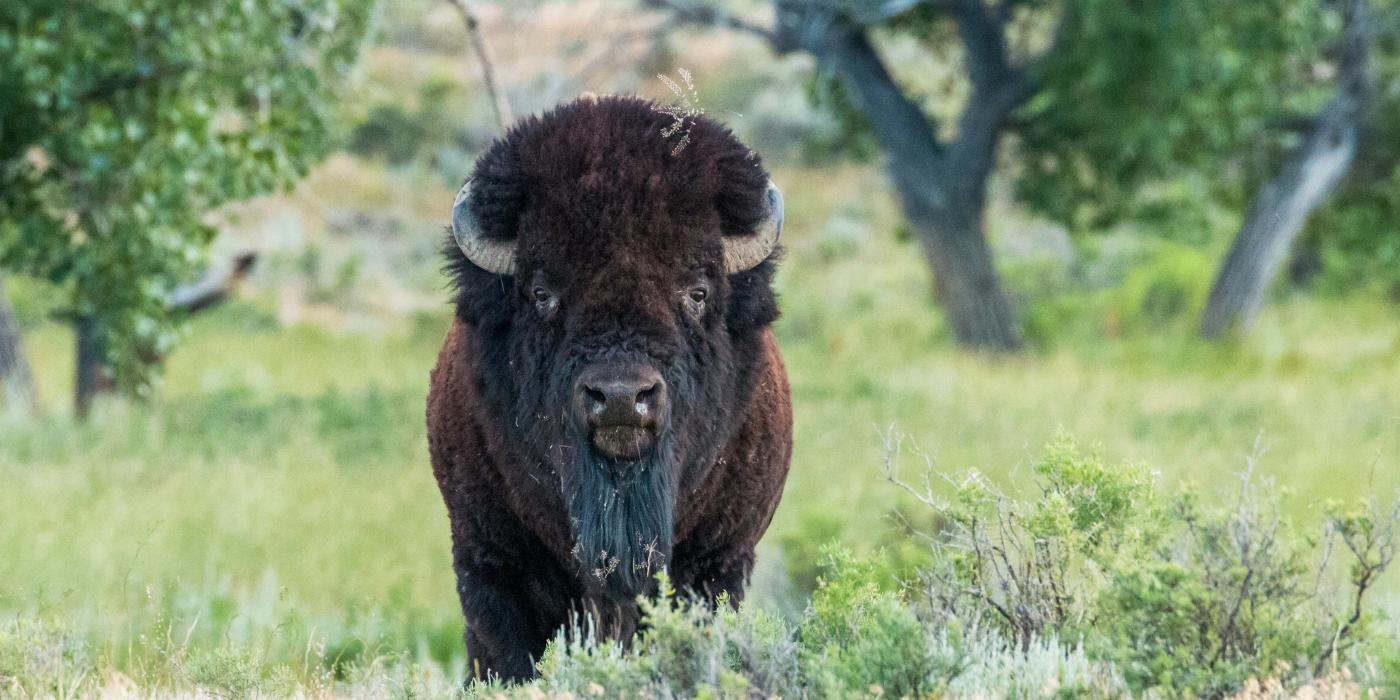How to Care for American Bison
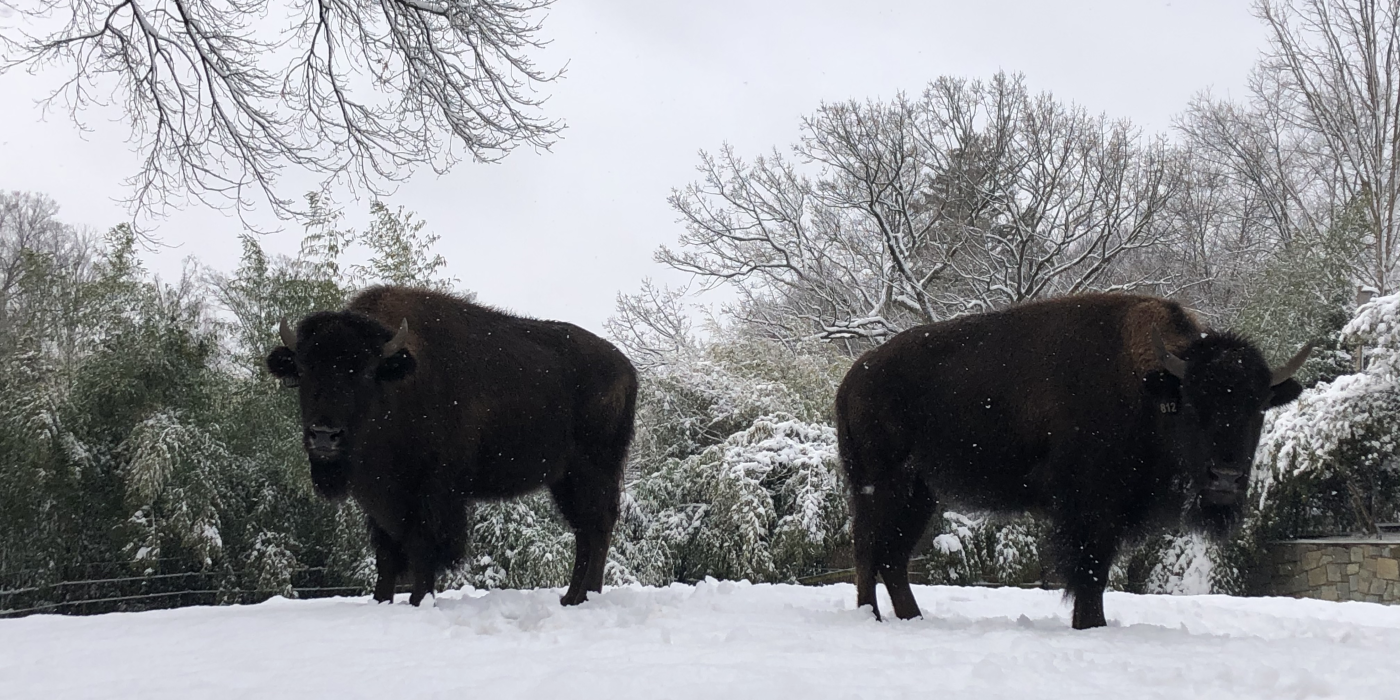
Have you herd? National Bison Day is the first Saturday in November. This year, it falls on Nov. 5 and the Smithsonian’s National Zoo and Conservation Biology Institute has a big reason to celebrate these iconic animals! Wallow in the autumn leaves with the Zoo’s bison, Lucy and Gally, and animal keeper Regina Bakely, as she shares her stories and the institution’s history of caring for American bison.
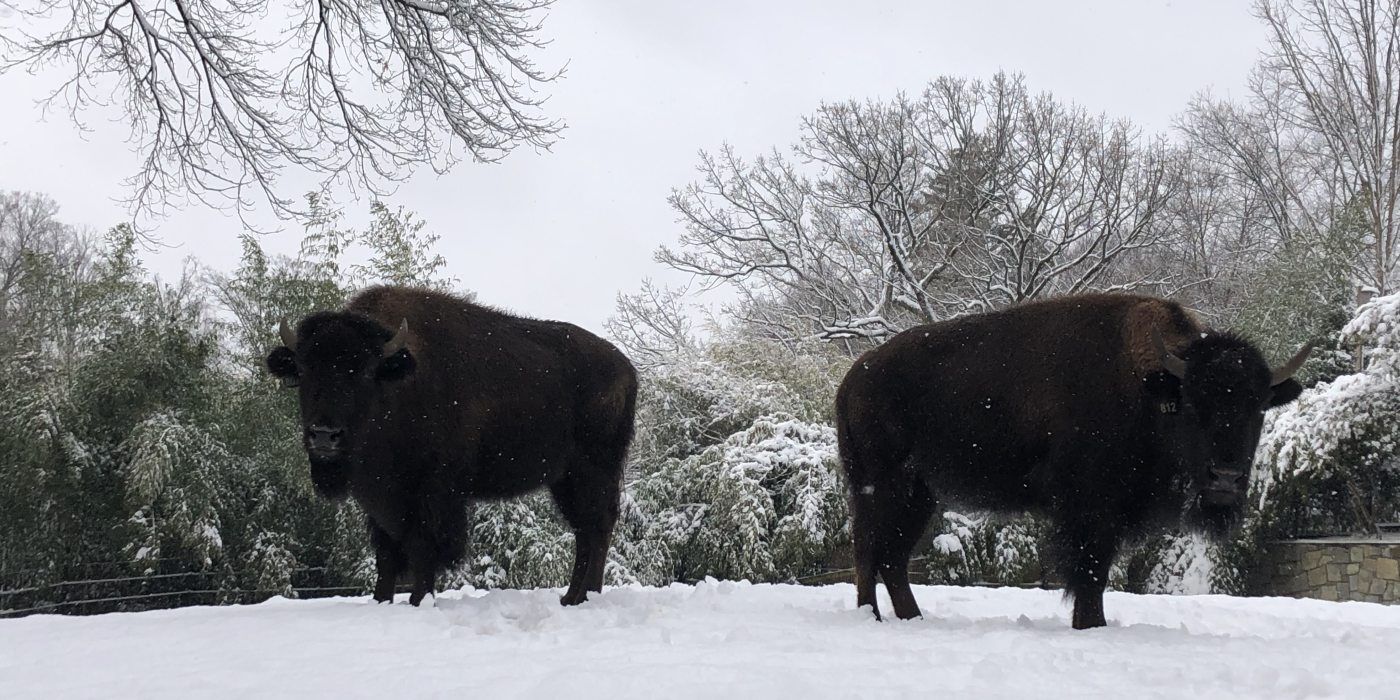
Bison are huge, impressive, intelligent animals and I love working with them. They are the largest terrestrial animals in North America and are the national mammal of the United States. They may not be overly expressive, but they have distinct personalities and preferences.
In the video below, my colleague Michelle Styles provides an up-close look at our bison, Lucy and Gally, and a glance into why these mammals are so significant:
Herds of American bison historically ranged from present day Alaska, through vast stretches across the United States and into Mexico. They played an integral role in the ecosystems where they lived and in the native cultures of the people they lived alongside.
European expansion across the continent fueled a near extermination of this iconic species. By the 1890s there were fewer than a thousand left. Our founder, William Temple Hornaday, saw this and decided to take action. His conservation efforts to save bison resulted in a small herd on the National Mall in Washington, D.C. and the eventual creation of Smithsonian’s National Zoo and Conservation Biology Institute.
The Zoo has been a leader in conservation—as well as a place for people to learn and connect with wildlife—since its start. Although bison populations have grown since Hornaday’s early efforts, they still need our help and protection.
We continue to participate in the conservation of bison today both in the wild and at the Zoo. It’s important for zoos to tell the bison’s story and continue to provide an opportunity for people to connect with bison and care about their future.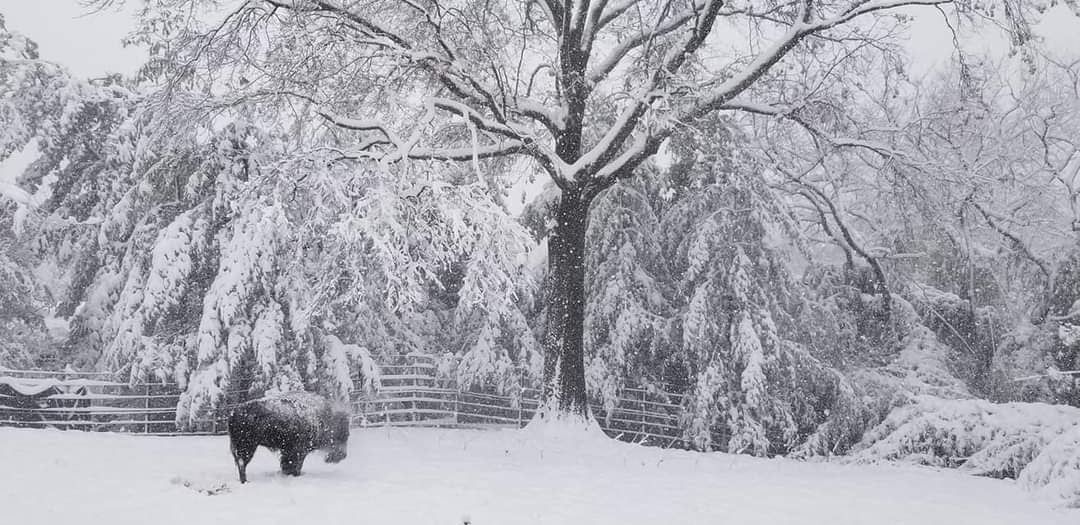
Living across most of North America has allowed bison to adapt to a wide variety of weather and temperature extremes. Although we provide them with a barn, Lucy and Gally often choose to stay outside in weather I’m usually trying to escape.
When it’s hot, visitors can see them sunbathing in their yard. When it’s raining, they stand against the wind and get soaked. And when it snows, they usually lay like big boulders, peacefully crusted in ice before the sun comes up. Then, later in the day, they bound around, playing in the winter wonderland. Bison were made for extremes, and it’s always impressive to see them fully embracing the natural changes the seasons bring.
In addition to the environmental enrichment, we also provide the bison with enrichment items to encourage other natural behaviors. They can spar with heavy weeble toys like they would other bison or toss around large, hefty boomer balls to work their powerful neck and shoulder muscles.
During the springtime, bison shed their thick winter coats. In the wild, they will rub on whatever they can find to help get the hair off. Here at the Zoo, we provide them with heavy studded rubber mats attached to posts and walls, and an upcycled car wash brush hanging by their barn for them to scratch and rub on.
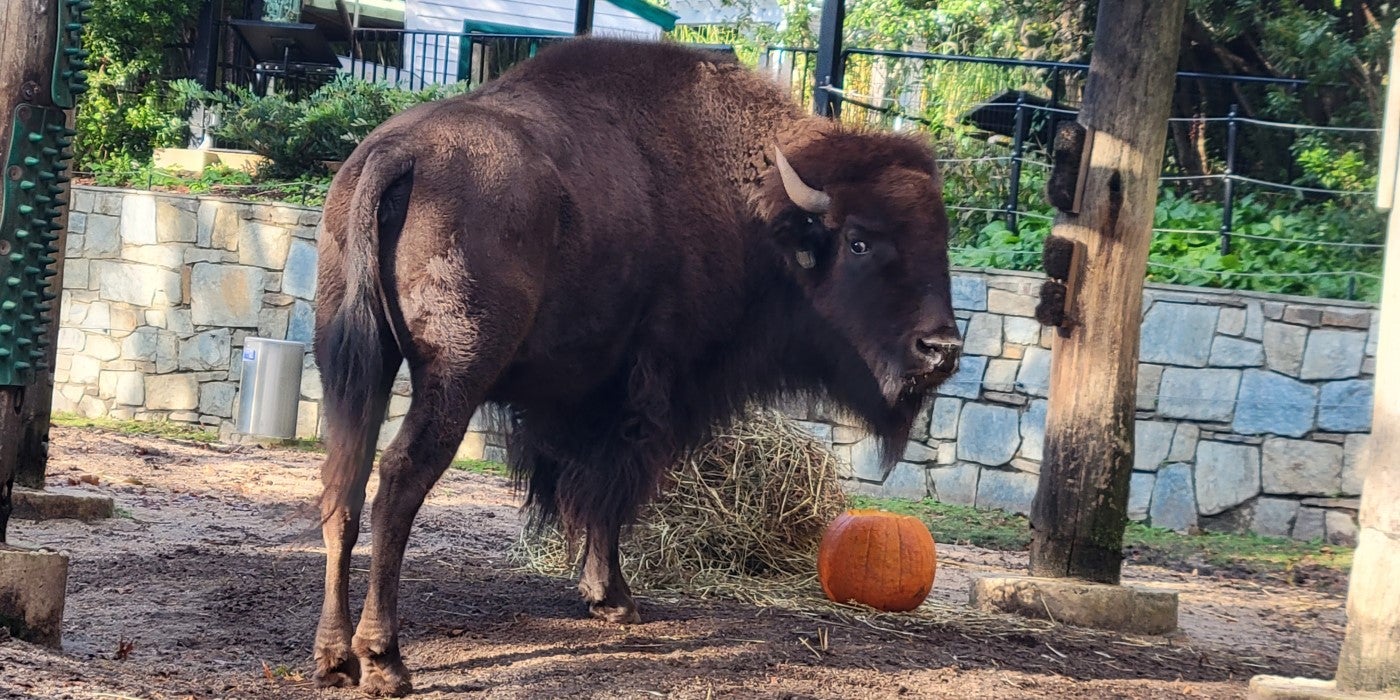
Bison are not overly expressive, but they do have subtle reactions that keepers pick up on. To build positive relationships with the bison, we teach them to associate us with good things, like food.
Even when visitors crowd in front of their habitat, the bison can identify their keepers passing by. Their head goes up just a bit and their eyes get very wide. If their eyes are wide enough to see the whites, then you know you’ve been spotted. Being picked out of a crowd and acknowledged by a bison always feels like an honor, even if it’s just because they want some snacks.
The bison also have individual preferences for what treats they like and who they take them from. Gally will politely take treats from some keepers’ hands but will only eat from other keepers if they drop the food in her bowl, otherwise she spits it out. That said, Gally is very food motivated, which is helpful in training!
Training is a big part of caring for bison. We often see placid bison grazing on the open plains or on hay in their yard at the Zoo. Don’t let that fool you! Bison are large, wild animals that can sometimes be aggressive but are also dangerous just because of their size.
They can run up to 35 miles an hour, and when they want to charge, escape danger, defend themselves or their young, or even play, you don’t want to be in the way. It’s important to always respect their space.
Training sessions allow us to build trust with the bison and provide them with more control over their care. In order for our animal care team to perform exams safely, the bison either have to be anesthetized or voluntarily enter a special cattle chute.
Bison are generally found in open spaces and live in herds together. Asking them to be separated, walk down a narrow metal chute and have humans in close proximity without an easy escape route, is a big ask. It took a long time to build trust and desensitize Lucy and Gally to the various parts of the process, but we are now able to do a fully awake exam with them in the chute!
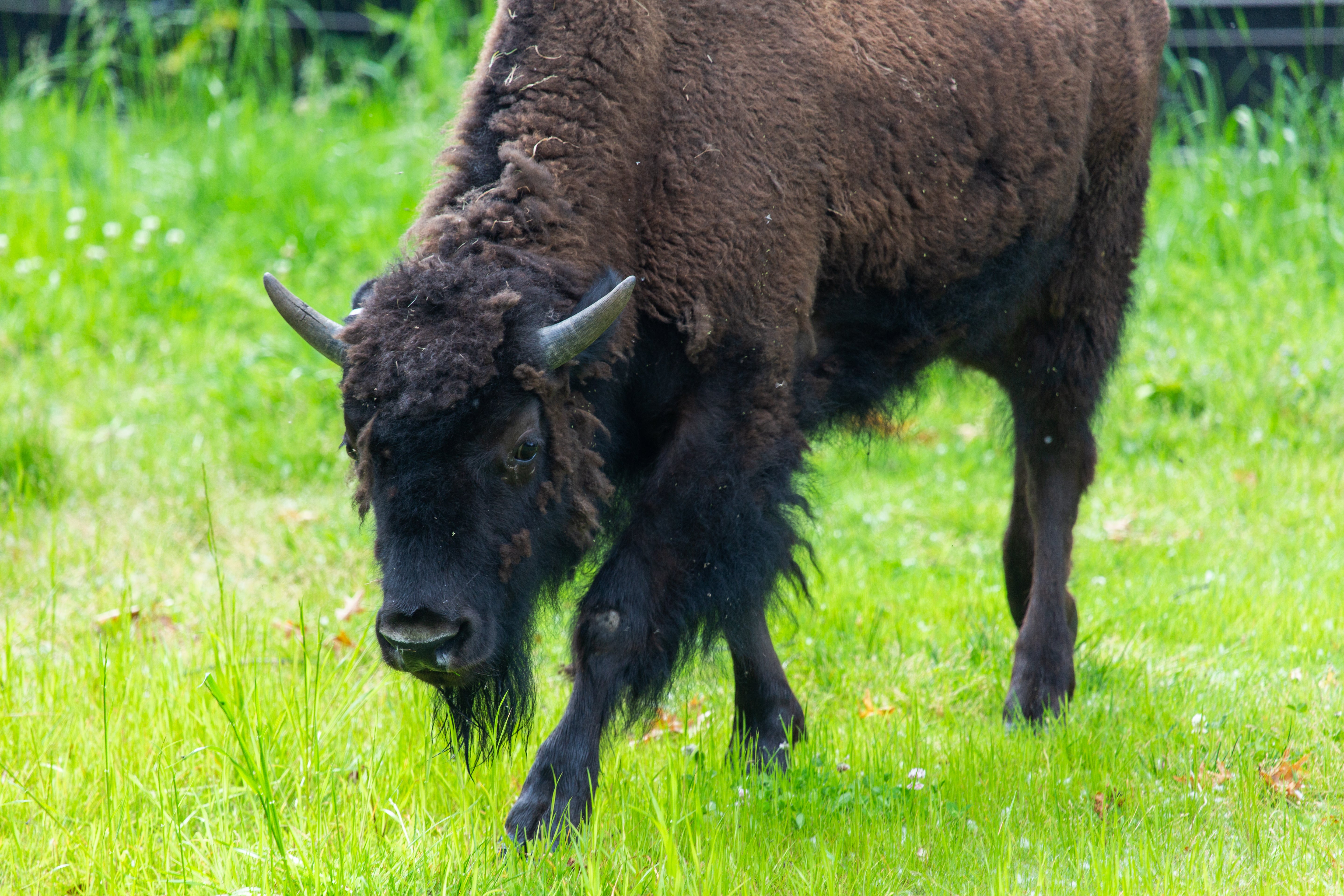
Finding ways to build relationships with the bison to provide the best care possible is one of the things I find most rewarding about being an animal keeper. Properly caring for animals is teachable, but for most of us that do this job, it’s also the easy and natural part.
I want everyone else to care, too. Hornaday brought bison to Washington, D.C. so people could experience them and care about the future of the species, like he did. I get to do the same thing today with Lucy and Gally.
Anyone interested in becoming an animal keeper can benefit from getting experience working with animals in whatever capacity they can. You may not be able to work with bison directly, but getting experience with other hoofstock could help you determine if it’s the kind of work you enjoy and give you the knowledge and experience to help you in your chosen career path!
Come meet Lucy and Gally when you plan your visit today!
Wallowing in excitement over these stories from our keepers? There’s more to explore! Check out a variety of stories from all over Smithsonian’s National Zoo and Conservation Biology Institute here.
Related Species:
